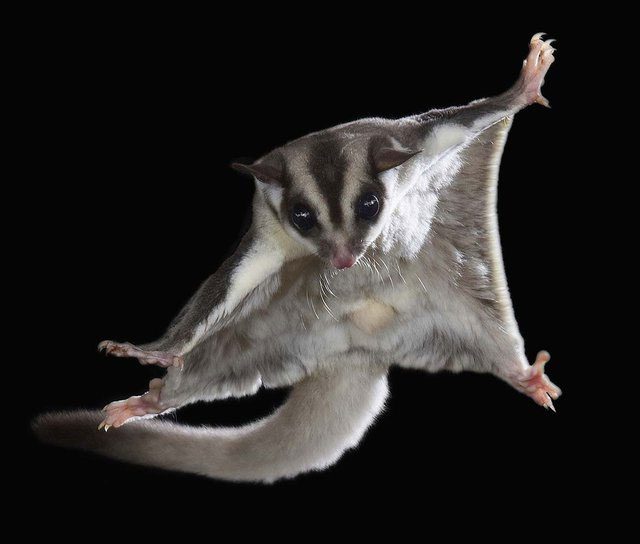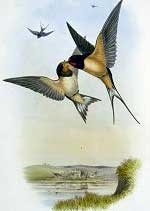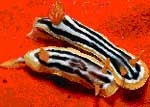The natural world is truly rich and diverse. Some animal species, despite not being birds, can soar gracefully. In this article, we will explore the top 5 most fascinating flying animals that lack wings.
Animals Capable of Gliding Elegantly Without Wings
1. Flying Stingray

Flying stingrays can leap out of the water like birds up to 2 meters high. (Photo: NatGeo)
The flying stingray, also known as Mobula, belongs to a genus of fish in the family Myliobatidae (eagle rays) and the order Myliobatiformes. You will likely be amazed to learn that these fish can leap out of the water like birds, reaching heights of up to 2 meters. These stingrays can have a wingspan of up to 5.2 meters and weigh as much as 1 ton.
According to scientists, flying stingrays inhabit a limited range with low reproductive rates. This forces them to compete fiercely for survival. During the breeding season, flying stingrays gather in large schools and seek to mate with females. To attract a partner, males leap as high as possible out of the water, spreading their “wings” to perform acrobatic displays, maximizing their water contact area to create the loudest splash.
2. Flying Snake

Flying snakes can glide quickly at speeds of 8 to 10 meters per second. (Photo: NatGeo).
The flying snake, scientifically known as Chrysopelea, is a genus of snakes in the subfamily Ahaetuliinae, family Colubridae. They are tree-dwelling snakes found from Southeast Asia (the Indochinese countries: Vietnam, Laos, Cambodia) to South Asia. Flying snakes primarily reside in tree canopies, jumping off branches to escape predators or pursue prey. They can glide distances of up to 24 meters.
Jake Socha, a biologist at Virginia Tech, states that flying snakes have a unique body structure that allows them to flatten themselves while gliding. They can tilt from side to side to catch the wind, generating lift against gravity. Flying snakes can glide swiftly at speeds of 8 to 10 meters per second.
3. Flying Squid

Flying squids can glide 30 meters over the water’s surface to evade predators or conserve energy during migration. (Photo: NatGeo)
The flying squid is known scientifically as Todarodes pacificus, belonging to the family Ommastrephidae. They inhabit the northern Pacific Ocean, around the waters of Japan, China, and Russia, as well as off the southern coasts of Alaska and Canada, and they are also found in central Vietnam. Flying squids are blue, approximately 20 cm long, and can glide for 30 meters over the water’s surface to escape predators or save energy during migration.
Flying squids possess two fins and a siphon that draws in water from one side and expels it from the other, which is also their gliding mechanism. They propel backward with their tentacles swaying while their fins act like wings, helping them maintain balance in the air.
4. Flying Frog

Flying frogs can easily glide down from high trees and land softly. (Photo: NatGeo)
The flying frog, also known as the gliding frog, is a species in the family Rhacophoridae. They are found in China, Indonesia, Laos, Malaysia, Thailand, Vietnam, and possibly Brunei and Myanmar. With strong limbs, webbing between their fingers and large foot membranes, flying frogs can glide down from high trees and land gently or glide from one tree to another without harm.
They are relatively large, with males measuring 72.3 – 85.5 mm and females 89.4 – 90.7 mm. Males and females have similar coloration. The appearance of flying frogs typically matches their habitat and can vary. Species living in tropical areas are often brightly colored, while those in temperate climates tend to be darker.
5. Flying Squirrel

This species of squirrel can glide distances of 60 – 100 meters in just a few seconds. (Photo: NatGeo)
The flying squirrel is a small marsupial native to Australia and New Guinea. Its body structure allows it to easily move from tree to tree. They have a thin membrane stretching along their sides, functioning like a parachute. Thanks to this delicate membrane, flying squirrels can glide distances of 60 – 100 meters in just a few seconds. However, they cannot take off from the ground and must jump from high trees.
During the day, flying squirrels usually hide in nests and venture out at night to forage and explore. Most of their time is spent sleeping. Flying squirrels have a smooth gray-blue coat, and their bodies are light and small. In the wild, flying squirrels can almost camouflage into their natural environment, such as leaves and branches, making them hard to spot.





















































